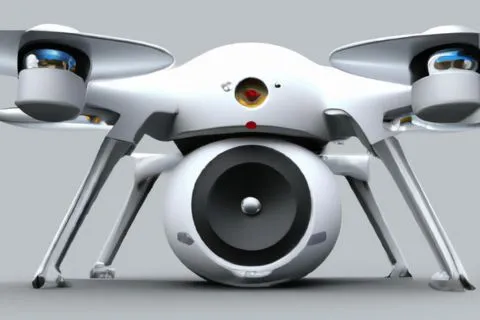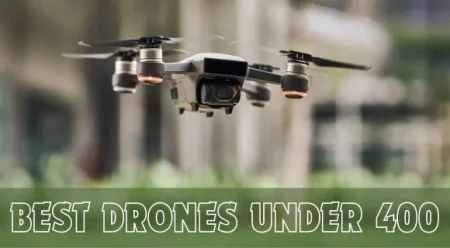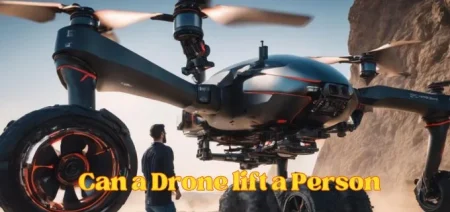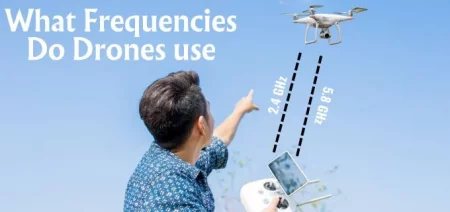
Have you ever been outside enjoying the peace of nature, only to be interrupted by the loud buzzing sound of a nearby drone? As drones become increasingly common, it’s becoming increasingly difficult to escape their noise pollution. But just how loud are drones, and what impact does their noise have on us and the environment?
How Loud are Drones
In this article, we’ll explore the various factors that can affect drone noise levels, compare them to other common sounds, and dive into the impact that drone noise can have on our health, wildlife, and quality of life. So let’s take a closer look at the fascinating world of drone noise and discover how loud these flying machines can be.
So, how loud are drones exactly? To answer this question, we must look at decibel levels used to measure sound. The decibel levels of drones can vary depending on several factors, such as the type of drone, altitude, and distance. Unlike other common sounds, drone noise levels can range from a low humming sound to a noise level exceeding that of car traffic or lawn mowers.
The impact of drone noise is a growing concern for environmentalists, wildlife experts, and communities near drone operating areas. Drone noise can disturb wildlife habitats and interfere with communication among animals. It can also cause hearing damage in humans exposed to high levels of drone noise for extended periods.
The Science of Drone Noise:
Understanding drone noise requires understanding its science. The noise level of a drone is determined by a combination of factors, including the number and size of its propellers, the design of its motor, and the overall design of the drone itself.
Different types of drones also produce different levels of noise. For example, quadcopters, the most common type of drone, produce more noise than fixed-wing drones due to their design. The altitude at which a drone operates can also impact its noise level.

The loudness of sound is measured in decibels (dB), and exposure to high levels of noise over a prolonged period can lead to hearing loss. The World Health Organization (WHO) recommends exposure to noise levels of no more than 85 dB for eight hours daily.
How loud is a drone in decibels?
The decibel levels of drones can vary depending on several factors, such as the type of drone, altitude, and distance. Generally, smaller drones tend to produce less noise than larger drones. Additionally, the altitude and distance of a drone can also affect the noise level, with drones producing less noise at higher altitudes or greater distances.
The noise level of a drone is typically measured at a distance of three feet (one meter) from the source. According to the Federal Aviation Administration (FAA), the noise level of small drones (weighing less than 55 pounds) ranges from 60 to 80 dB at three feet from the source. For comparison, the noise level of a typical conversation is around 60 dB, while the noise level of car traffic can range from 70 to 90 dB.
It’s important to note that the noise level of a drone can also vary depending on the drone’s mode of operation. For instance, a drone in hover mode may produce more noise than a forward-flight mode drone. The number of rotors on a drone can also affect the noise level, with drones with fewer rotors tending to produce less noise than those with more rotors.
Comparison of the decibel levels of drones to other common sounds
To understand the noise level of drones, comparing their decibel levels to other common sounds can be helpful. Decibels (dB) are a measurement unit used to quantify sound intensity.
The noise level of drones can vary depending on several factors, including the type of drone, its distance from the listener, and the operating conditions. However, on average, the noise level of drones ranges from 60-80 dB.
To put this into perspective, here are some common sounds and their corresponding decibel levels:
- Whisper: 20 dB
- Conversation: 60 dB
- City traffic: 80 dB
- Lawnmower: 90 dB
- Chainsaw: 100 dB
- Jet engine: 140 dB
This comparison shows that the noise level of drones falls within the range of city traffic and can be comparable to the noise level of a lawnmower or a leaf blower. However, it is important to note that the noise level of a drone can vary depending on the specific model and operating conditions.
It is also important to consider the duration of exposure to drone noise. Prolonged exposure to noise levels above 85 dB can lead to hearing damage, so drone users and those exposed to drone noise need to use appropriate hearing protection.
The noise level of drones ranges from 60-80 dB on average, comparable to the noise level of city traffic and some common household tools. However, the duration of exposure to drone noise is an important factor, and appropriate hearing protection should be used when necessary.
Comparison Table
The following table shows the loud levels of different drones:
| Type of Drone | Distance from Drone (ft) | Noise Level (dB) | Sounds Like | Propulsion Type | Flight Mode | Flight Altitude (ft) |
| Small consumer drones (e.g. DJI Mavic Mini) | 10 | 50-60 dB | Quiet conversation | Electric | Hovering | 50-100 |
| Mid-sized consumer drones (e.g. DJI Phantom 4 Pro) | 25 | 60-70 dB | Normal conversation | Electric | Hovering/Cruising | 100-400 |
| Large industrial drones (e.g. DJI Matrice 600) | 50 | 70-80 dB | Vacuum cleaner or city traffic | Electric/Gas | Hovering/Cruising | 100-1000 |
| Fixed-wing drones (e.g. Parrot Disco) | 100 | 60-70 dB | Lawn mower | Electric | Cruising | 100-400 |
| Quadcopters (e.g. Yuneec Typhoon H) | 75 | 70-80 dB | Blender or hair dryer | Electric | Hovering/Cruising | 50-400 |
| Hybrid drones (e.g. DJI Mavic 2 Enterprise) | 25 | 60-70 dB | Normal conversation | Electric/Gas | Hovering/Cruising | 50-400 |
Factors that can affect drone noise levels
The noise level of drones can be affected by several factors, and the following are some factors that can affect drone noise levels:
Drone type:
Different types of drones, such as quadcopters, fixed-wing drones, and hybrid drones, can produce different levels of noise. For example, quadcopters tend to be louder than fixed-wing drones due to the nature of their propulsion systems.
Drone size and shape:
The size and shape of a drone can also impact its noise level. Larger drones tend to produce more noise than smaller ones, and drones with large rotors or propellers can be louder than those with smaller ones.

Weight:
The weight of a drone can also affect its noise level. Heavier drones may require more power to stay in the air, resulting in louder noise levels.
Operating conditions:
The operating conditions of a drone, such as wind speed, temperature, and humidity, can also affect its noise level. For example, drones may make more noise when flying in windy or hot temperatures.
Altitude and distance:
The altitude and distance of a drone from the listener can also affect its noise level. Drones flying at higher altitudes may produce less noise due to reduced air density, while drones flying closer to the listener may produce more noise.
Propulsion system:
The type of propulsion system a drone uses can also impact its noise level. Drones powered by electric motors tend to be quieter than combustion engines.
Factors that Contribute to the Loudness of Drones
There are several reasons why drones can be loud, including
The Propulsion system:
Drones are powered by electric motors or gas engines, which can generate significant noise. Gas engines tend to be louder than electric motors due to the combustion process involved.
Size and weight:
Larger drones with heavier payloads require more powerful propulsion systems, which can result in higher noise levels. The motors or engines must work harder to lift and maneuver the drone.
Rotors:
The rotor blades of a drone can produce a significant amount of noise as they spin rapidly to provide lift and propulsion. This noise can be amplified by the air rushing through the rotors, creating a distinctive whirring sound.
Flight mode:
Drones in hovering mode tend to be louder than drones in cruising mode. This is because hovering requires more power from the propulsion system to keep the drone stable in the air.
Altitude:
Drones flying at higher altitudes tend to be quieter than those flying at lower altitudes. This is because the sound waves produced by the drone are more dispersed at higher altitudes, making them less noticeable to people on the ground.
Operating conditions:
The noise level of a drone can also be affected by its operating conditions, such as wind speed, temperature, and humidity. For example, high winds can cause the rotors to produce more noise as they work harder to maintain stability in the air.
Overall, a drone’s noise level is affected by various factors, including the type of propulsion system, the size and weight of the drone, the flight mode, altitude, and operating conditions. While efforts are being made to reduce the noise level of drones, it remains an ongoing challenge for drone manufacturers and operators.
What Does a Drone Sound Like?
Different types of drones produce varying sounds, from propeller noise to motor noise and buzzing. Its design and mode of operation typically determine the sound of a drone.
Quadcopters, for example, tend to produce a high-pitched sound due to their four rotors. This sound can be described as a buzzing or whirring noise, often more noticeable at lower altitudes or when the drone hovers in place.
Fixed-wing drones, on the other hand, generate a buzzing noise due to the rotation of their propellers. This noise is often lower in pitch than the sound of a quadcopter and can be described as a humming noise.
In addition to the type of drone, other factors, such as its speed and altitude, can also affect the sound it produces. As a drone increases in speed, it may produce a higher-pitched sound due to the increased rotation speed of its rotors. Similarly, a drone at a higher altitude may produce a quieter sound due to the increased distance from the source.
Understanding the different sounds of drones can help users identify the type of drone they are hearing and can also help mitigate noise pollution. It can also help develop better noise-reducing technologies for drones, which can help reduce the negative impact of drones on the environment and communities.
The Impact of Drone Noise
While drones offer numerous benefits, such as aerial photography, search and rescue operations, and scientific research, they can also negatively impact the environment and communities due to their noise levels.
- Drone noise can cause annoyance, stress, and disturbance to people, animals, and wildlife. Excessive noise can also impact sleep, communication, and the quality of life for those close to drone operations. It can also impact the natural habitats of wildlife, potentially leading to displacement and other negative effects.
- Furthermore, drone noise can also impact the safety and security of communities. The noise generated by drones can mask other sounds, making it difficult to detect other hazards, such as approaching vehicles, sirens, or alarms.
Recognizing the potential negative impacts of drone noise, the Federal Aviation Administration (FAA) has implemented guidelines and regulations to minimize the noise impact of drones on communities. The Federal Aviation Administration (FAA) mandates that pilots fly their drones at a minimum altitude of 400 feet above ground level, except for takeoff and landing procedures. It helps reduce the impact of drone noise on communities and wildlife.

In addition to regulatory measures, there are also technological solutions to reduce the noise impact of drones. For example, using quieter electric motors instead of traditional combustion engines can significantly reduce drone noise levels. Similarly, using noise-reducing propellers or mufflers can also help reduce the noise impact of drones.
Do drones sound like helicopters?
While drones and helicopters share some similarities regarding flight characteristics, they can produce different sounds. Drones typically produce a high-pitched whining sound, while helicopters produce a distinctive thumping sound due to the rotor blades beating against the air.
The sound of a drone can vary depending on several factors, including its type, size, and operating conditions. However, drones generally produce a more high-pitched and consistent sound than the thumping and irregular sound produced by helicopters.
It’s worth noting that some drones are designed to mimic the sound of helicopters for various reasons, such as to enhance their aesthetic appeal or to provide a sense of familiarity to users accustomed to the sound of helicopters. However, this is not the norm, and most drones have a distinct sound that sets them apart from helicopters.
How loud are military drones?
Military and police drones generally tend to be larger and more powerful than consumer drones, which can result in higher noise levels.
Some military drones, such as the General Atomics MQ-9 Reaper, have been reported to produce noise levels of up to 140 decibels (dB) during takeoff and landing. This is significantly louder than the noise levels produced by most consumer drones, which typically range from 50-80 dB.
General Atomics MQ-9 Reaper images
Some military drones may be designed to operate quietly for stealth purposes, while others may prioritize performance over noise reduction.
Military drones produce higher noise levels than consumer drones due to their larger size and more powerful propulsion systems.
Frequently Asked Questions
How can I reduce the noise level of my drone?
There are a few ways to reduce the noise level of a drone, including using quieter motors or rotors, reducing the drone’s weight, and flying at higher altitudes. You can also purchase aftermarket parts or accessories designed to reduce noise levels.
Can drone noise cause hearing damage?
Prolonged exposure to high levels of noise, including drone noise, can potentially cause hearing damage. For prolonged exposure to loud drones, it is advisable to utilize hearing protection when operating or close to them.
Are there any health risks associated with drone noise?
While no specific health risks are associated with drone noise, prolonged exposure to loud noise can cause stress, anxiety, and other health issues.
Can the noise level of a drone affect its flight performance?
In some cases, the noise level of a drone can affect its flight performance, particularly if it is designed for stealth or reconnaissance missions. However, in most cases, the noise level of a drone does not significantly impact its flight capabilities.
At what height is a drone silent?
There is no set height at which a drone becomes completely silent. However, drones flying at higher altitudes tend to produce less noticeable noise due to more dispersed sound waves.
How far away can you hear a drone?
The distance at which you can hear a drone depends on several factors, including the noise level of the drone, the altitude at which it is flying, and the ambient noise in the environment. You can hear most drones within a few hundred feet, although some models may be audible farther away.
Conclusion:
Drones can produce a wide range of noise levels depending on various factors such as their size, propulsion system, and flight mode. While drones may not be as loud as some other common sources of noise, their unique sound profile and increasing prevalence can significantly impact our environment and quality of life.
Whether you’re a drone enthusiast or just someone trying to enjoy a quiet moment outdoors, understanding the science behind drone noise can help us all better appreciate and manage these fascinating flying machines.










